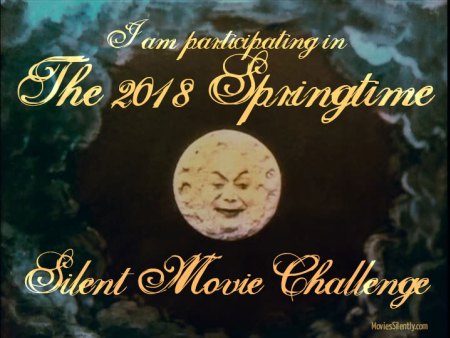This post is part of the Springtime Silent Movie Challenge: In the Beginning..., hosted by Fritzi at Movies Silently. "Here’s the challenge. Before June 21, 2018, you will:
"Watch 5 movies made between 1906 and 1914
"Watch 5 movies made in 1905 or before
"Share your experience on your blog, on social media or here in the comments (I will set up a special post for the purpose to publish on June 21)"
For my five 1905 or before movies, I thought I would look at some pioneering efforts.
My third film is one of the first films to be projected before a paying audience.
When I was in grammar school, I read several books about film comedy. At least one them called "L'Arroseur Arrosé" ("The Sprinkler Sprinkled" or more commonly "Watering the Waterer" in English) the first movie comedy. I think they were correct.
The film begins with a man watering a flowers in a garden. He wears clogs, a long apron and a straw hat. A boy enters the frame and stands on the hose. The water stops spraying from the hose. The gardener looks at the hose and the boy lifts this foot. The gardener gets sprayed in the face and his hat flies off. The kid runs and the gardener catches him and pulls him back to the center of the frame by his ear. The gardener spanks the kid. When the gardener is done, the kid walks briskly off the screen and the gardener resumes watering.
This is still funny 123 years later.
Brothers Auguste and Louis Lumière grew up in Lyon. Their father operated a small factory which made photographic plates and generated losses. Both brothers went to technical school. After they graduated, they ran the factory. They automated the process of making plates and money. Both brothers were inventors who made many improvements to the dry plate process and later developed the first commercial color film process.
Their father retired in 1892 and they began to work on making moving pictures. By 1895, they had created the Cinematographe, a device which could shoot movies, make prints and project them. On 22-March-1895 they had a private screening at the Society for the Development of the National Industry in Paris. On 28-December-1895, they showed their films to a paying audience in Paris. This is generally considered to be the beginning of commercial cinema.
"L'Arroseur Arrosé" was the second film on the program.
 |
| "The Lumière Cinematograph," Journal of the Society of Motion Picture Engineers, December, 1936 |
The brothers sent cameramen around the world to film many famous places and people. They soon lost interest in movies and concentrated on color photography. When magician Georges Méliès, who was to become a pioneering filmmaker, wanted to buy a camera, they told him that film was just a novelty. They would not sell him a camera.
Next Saturday: A film by the first women director, who was one of the first directors of either gender.



No comments:
Post a Comment
Comment moderation is turned on. Your message will appear after it has been reviewed.